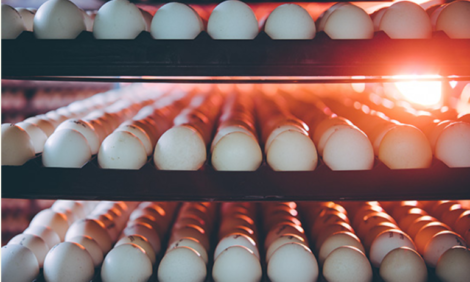



EU Meat Consumption Falls Along with Production
EU - Overall meat production in the EU is expected to decrease by 1.1 per cent in 2012 and remain stable with a further small decrease of 0.1 per cent in 2013, while a decrease in total EU meat consumption is foreseen of 0.7 per cent in 2012 and 0.4 per cent in 2013, according to the European Commission's Short Term Outlook for February 2012.The EU meat sector in 2011 was supported by a relatively strong level of demand on the world market characterised by the quite favourable global economic situation. Global import demand increased, partly as a consequence of animal disease related supply constraints in the Far-East.
Overall supply of meat was further constrained by high feed costs despite the reasonably good harvest in the EU, US, Canada and Russia. As a consequence world prices increased which contributed to the continued good performance of EU exports.
The outlook is characterised by a further contraction in total EU meat consumption, which is expected to decrease by 0.7 per cent in 2012 and 0.4 per cent in 2013. Only poultry meat has proven to be resilient, with consumption estimated to have grown slightly in 2011 and expected to increase further over the outlook period given its healthy image and relative cheapness.
Overall meat production in the EU should decrease slightly (by 1.1 per cent) in 2012, and remain stable in 2013.
Poultry meat
It is only for poultry meat that the total consumption is expected to increase in 2012 by 0.8 per cent in the EU mainly triggered by a higher domestic demand and relatively cheap availability.
World demand for poultry meat is growing everywhere except in the US where the demand is likely to remain weak. Global production should grow except in the US where poor profitability led to a cut in production since the second half of 2011. Net production in the EU is expected to grow slightly by 0.6 per cent in 2012 and by 0.7 per cent in 2013 compared with the years before.
Concerning the trade flows in 2012, our exports are expected to decline by 1.2 per cent and this tendency should continue in 2013 with imports remaining at the same level in 2012 as in 2011.
Uncertainties
Production and trade related uncertainties would mainly originate from rising production and investment costs and their financing, from a limited sectoral adjustment capacity with respect to market volatility, and from animal health related issues (for example, the Schmallenberg virus in the beef and sheep sectors). Prices for energy and protein feed components and other essential feed ingredients have been increasing since 2010 and are expected to remain high.
Further Reading
| - | You can view the full report by clicking here. |








